The RTX 3080 is undoubtedly an expensive card. The ASUS TUF Gaming RTX 3080 10G, however, is one of the cheapest aftermarket RTX 3080s in the market. But does this reduced cost mean you should lower your expectations or will it bring performance and features more than you expect from its price tag?
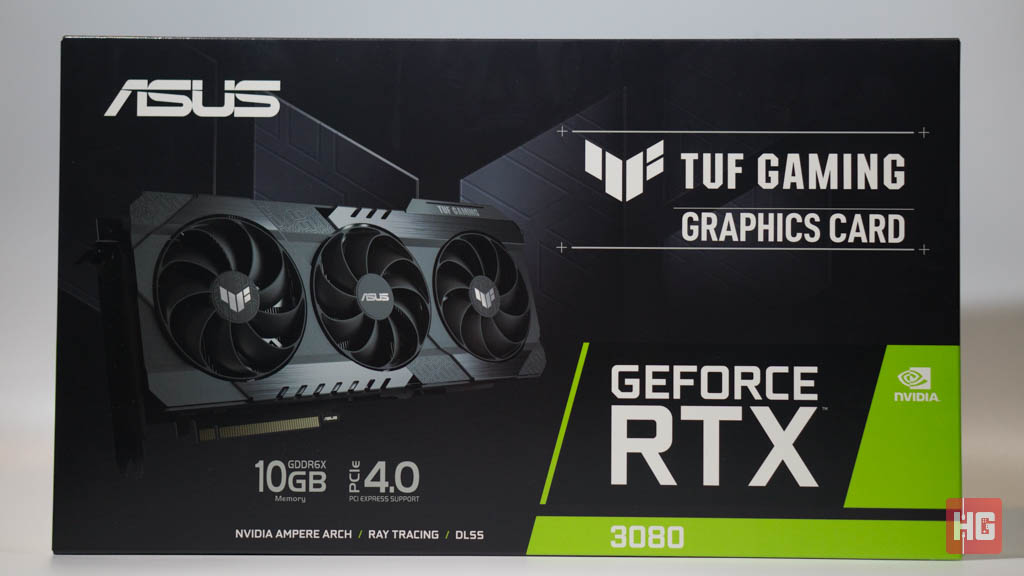
| Model | ASUS TUF Gaming RTX 3080 10G | NVIDIA GeForce RTX 3080 Founders Edition |
| GPU | GA102 | GA102 |
| Architecture | Ampere | Ampere |
| Transistor Count | 28.3 Billion | 28.3 Billion |
| Manufacturing Process | Samsung 8nm | Samsung 8nm |
| Boost Clock | 1740MHz (OC), 1710 (Gaming) | 1710MHz |
| CUDA Cores | 8704 | 8704 |
| Tensor Cores | 272 | 272 |
| RT Cores | 68 | 68 |
| Memory | 10GB GDDR6X | 10GB GDDR6X |
| TDP | 340W | 320W |
| Power Connectors | 2x 8-pin PCIe | 1x 12-pin connector |
| Display Connections | 3x DisplayPort 1.4a, 2x HDMI 2.1 | 3x DisplayPort 1.4a, HDMI 2.1 |
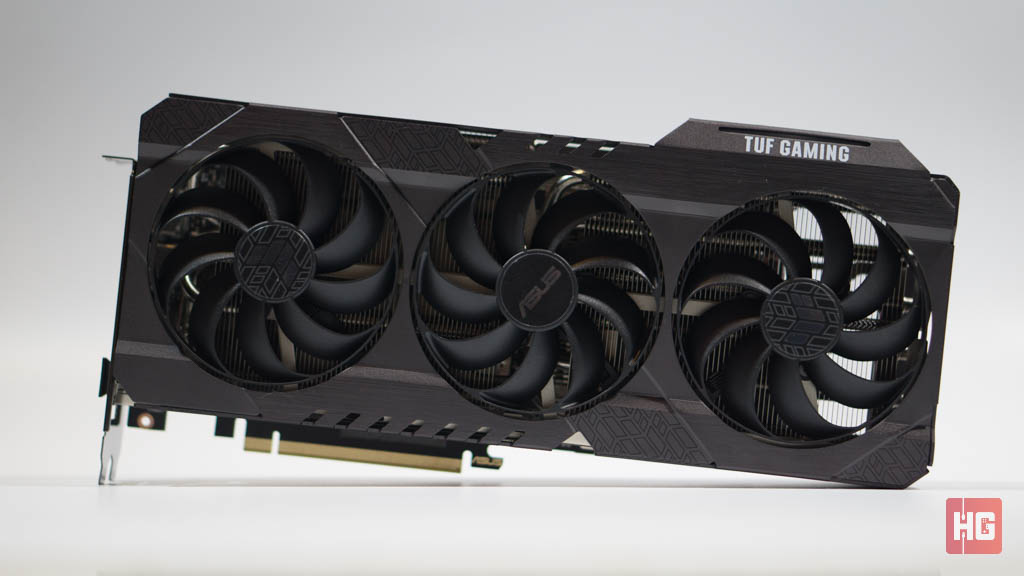
While not as massive as higher tier cards like the Strix version or the MSI RTX 3080 Gaming X Trio, the TUF Gaming RTX 3080 10G is still a large card measuring 299.9 x 126.9 x 51.7mm. Although it does weigh quite a bit thanks to its aluminum shroud and massive heatsink, everything seems solid enough once it’s screwed in to the PCIe expansion slots of your rig.
ASUS is using three of their latest generation Axial-tech fans on the TUF Gaming RTX 3080 10G. They say that these new fans are capable of delivering increased airflow in order to improve cooling. Its central fans spins in a different direction to the left and right ones in order to reduce turbulence and thus improve temperature values overall.
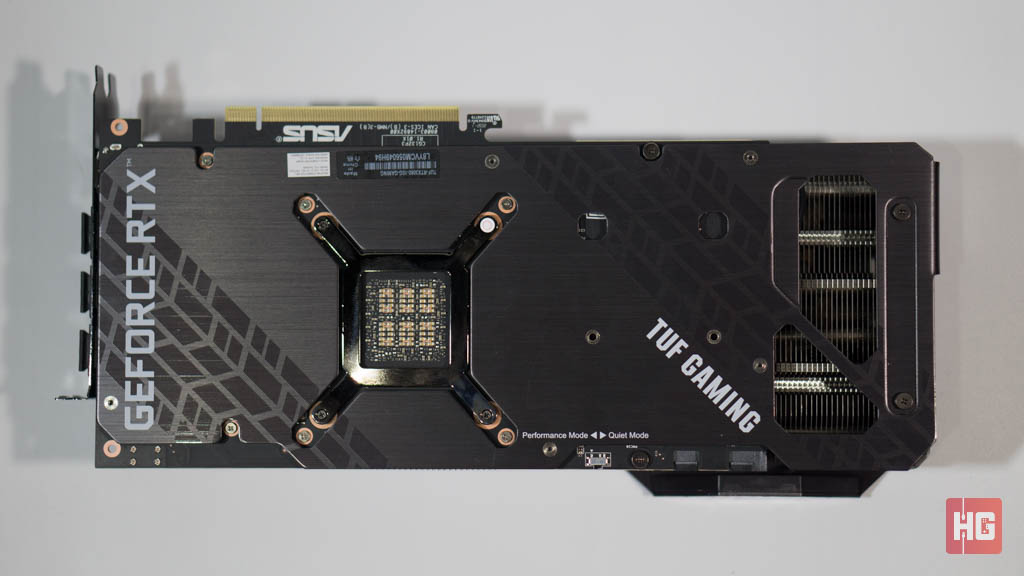
The TUF Gaming RTX 3080 10G continues its aluminum design on its backplate, which means that there’s added rigidity to this hefty card. ASUS has decided to leave large cutouts near the end of the card since the actual PCB is smaller than the backplate. This means that part of the heatsink is visible and allows airflow to pass through to avoid trapping air that might increase the temperature within.

A BIOS switch is present on the PCB that changes the card from Performance and Quiet modes. While changing profiles can be done through GPU Tweak II, ASUS acknowledges that this switch is an added benefit for enthusiasts in general that allows shifting performance modes without installing anything.
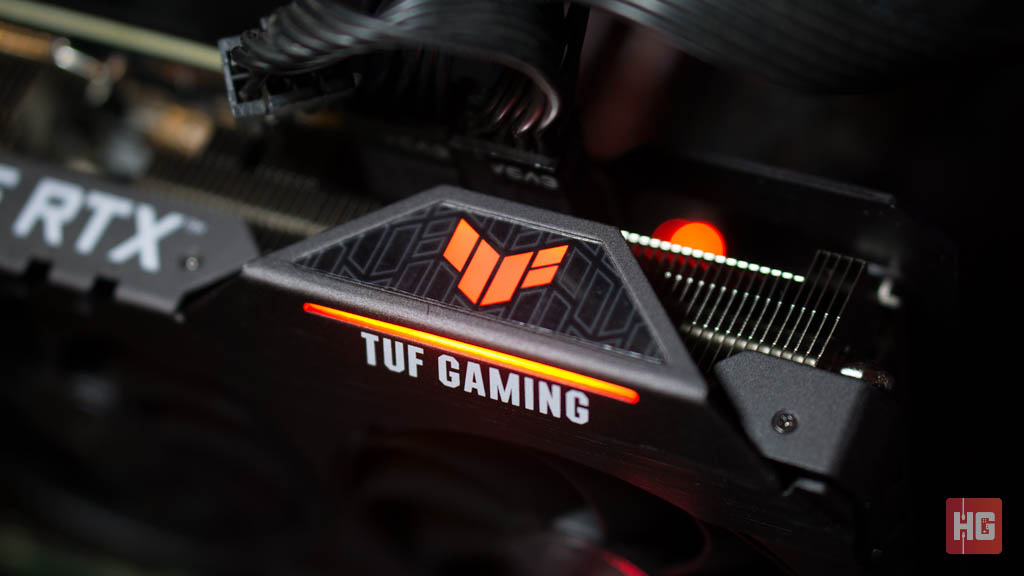
ASUS is being modest with their integration of RGB lighting on the TUF Gaming RTX 3080 10G. Instead of placing a million blinding lights on the card, they are keeping it tasteful by keeping the RGB zone on the TUF Gaming logo on the side near the GeForce logo. It does support AURA Sync so if you have a compatible motherboard or other peripherals, you can synchronize their lighting through the Armoury Crate app.
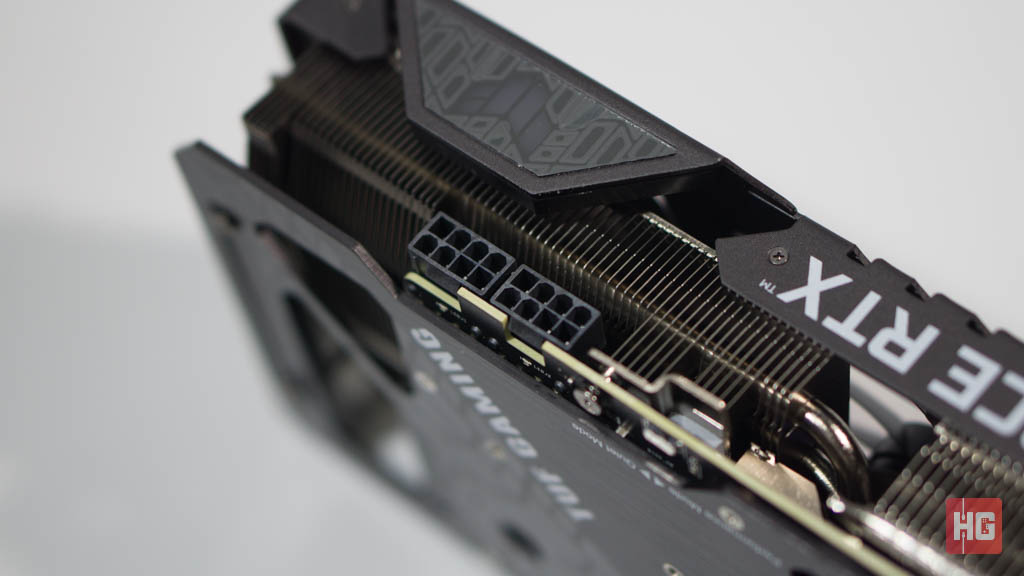
The TUF Gaming RTX 3080 10G gets its power through two 8-pin PCIe connectors, which is fairly vanilla and standard compared to the 12-pin power connector of the RTX 3080 Founders Edition. Power delivery is handled by a 16 + 4 configuration, with 16 phases dedicated to the GPU while the remaining 4 phases is for its VRAM.
This particular card is the non-OC version of the TUF Gaming RTX 3080 10G, which runs a slightly higher 1740MHz boost clock against the Founders Edition’s 1710MHz but it is slower compared to the overclocked variant’s 1815MHz OC Mode boost clock.
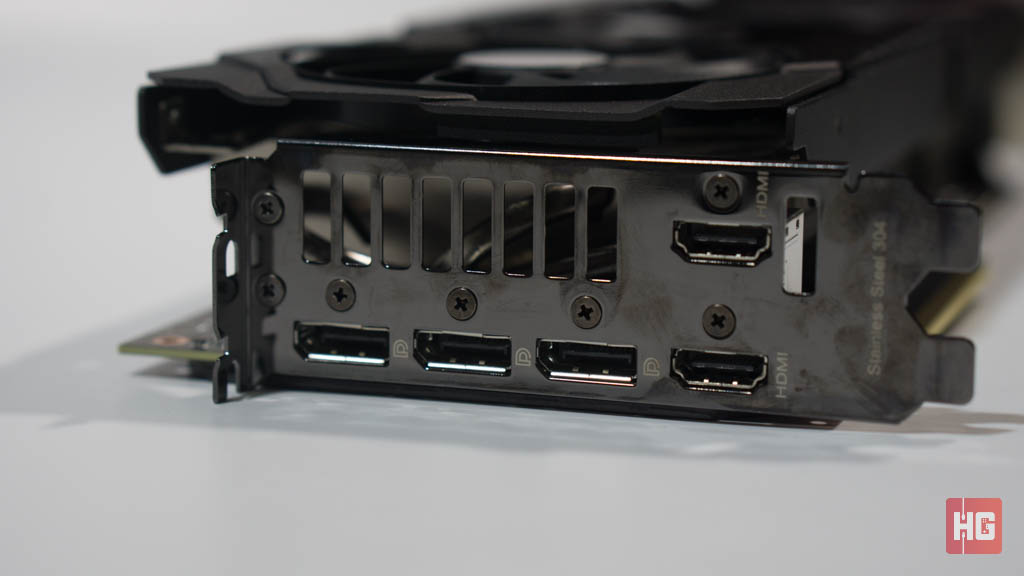
For its display connections, the card has the complementary three DisplayPort 1.4a ports at the back. ASUS is throwing in two HDMI ports so you can expand the number of your displays as you see fit.
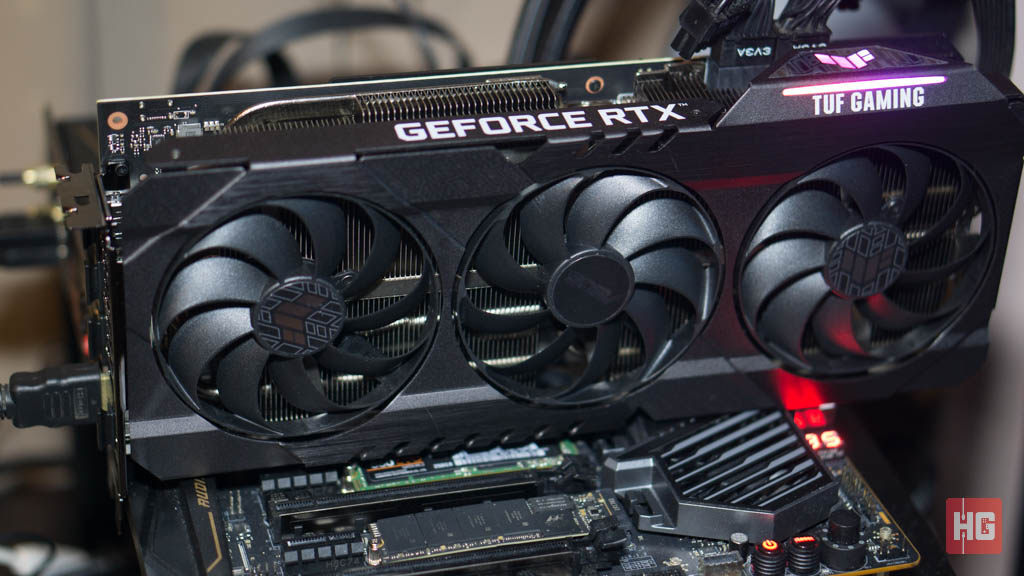
We’ll still be using our temporary test bench provided as seen in our previous review in order to see what kind of framerates the TUF Gaming RTX 3080 10G will be able to produce. After much delibration
After much deliberation, we have decided to upgrade our test bench in order to provide more consistent and accurate numbers in our testing. At this time, however, we do not have yet all the components to make the necessary upgrades. This means that we will still be using the setup we used in our previous review of an RTX 3080.
Our test suite includes a mix of synthetic and real world games using DX 11, DX 12, and Vulkan APIs. All games are tested at their highest possible preset at 1920 x 1080, 2560 x 1440, and 3840 x 2160 resolutions with Vsync disabled. Ray Tracing will be tested separately for GPUs that support it but vendor-specific features like DLSS will not be used to maintain parity.
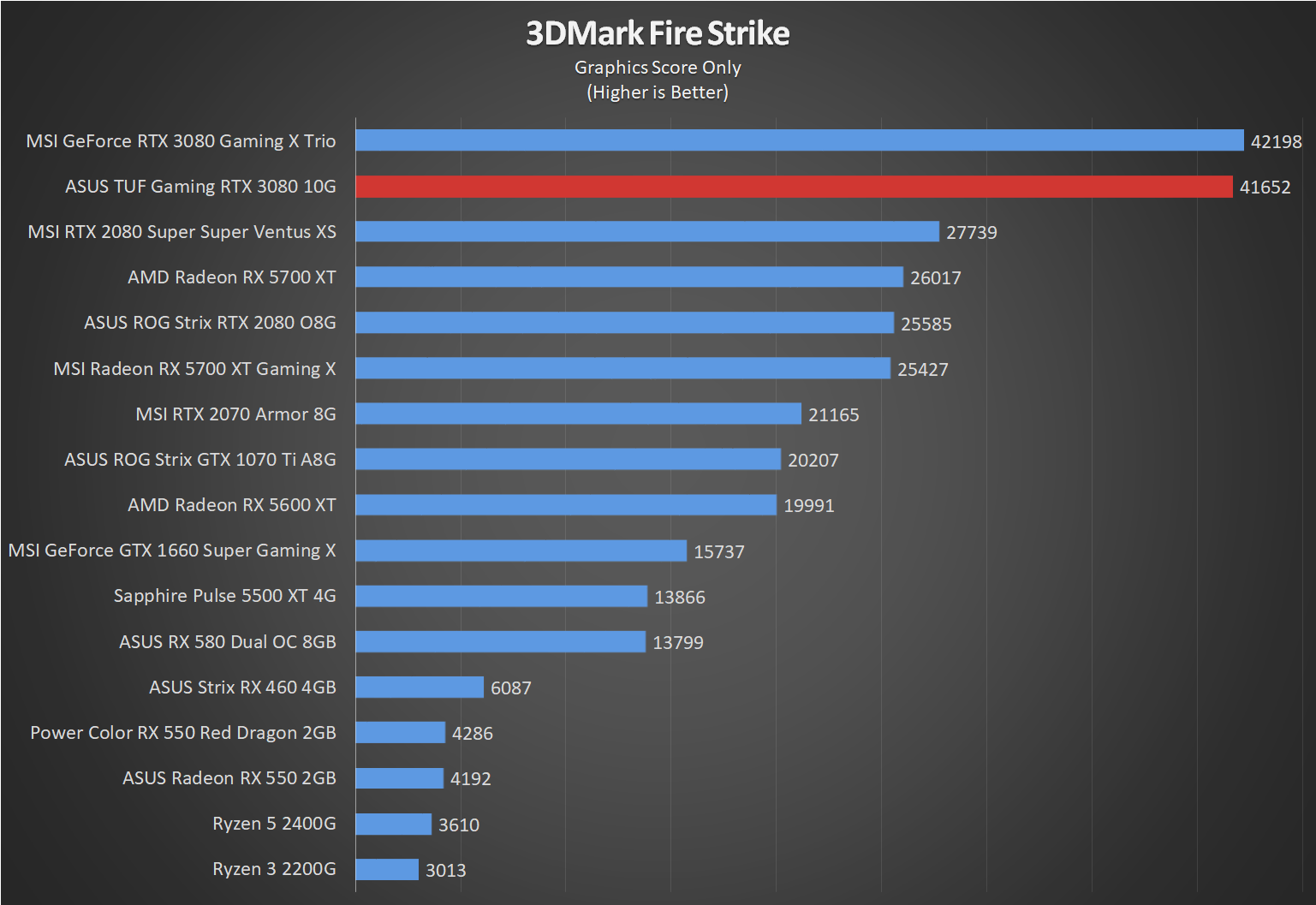


3DMark Fire Strike showcases the capabilities of the DirectX 11 API in high-performance gaming PCs. Its graphics are rendered in real-time with enhanced detail and complexity to test GPUs to their limit.
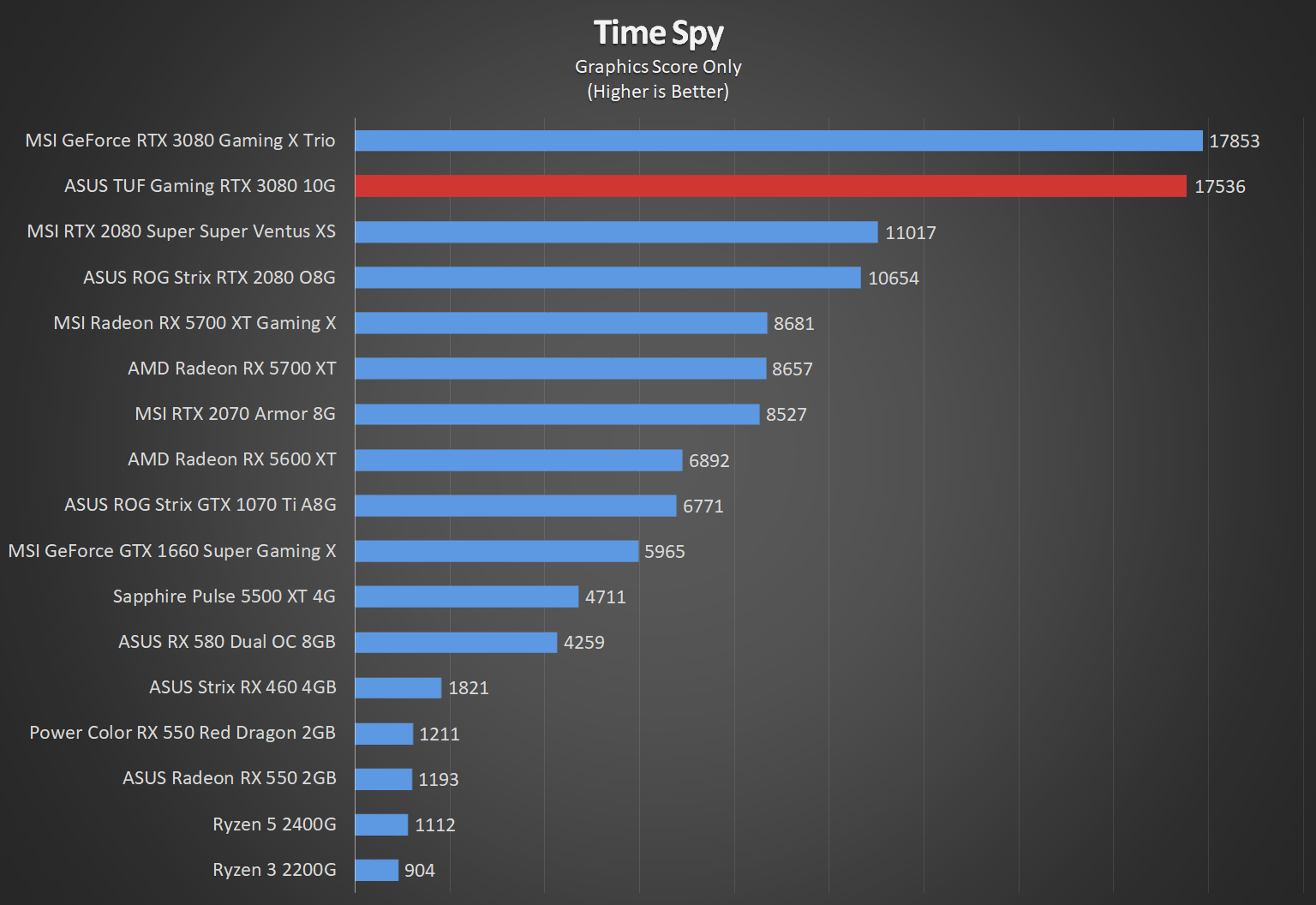
Time Spy is one of the first benchmarks that fully utilizes DirectX 12. Meant as a stress test for Windows 10 gaming PCs, it uses DirectX 12 features such as asynchronous compute, explicit multi-adapter, and multi-threading.

The world’s first dedicated real-time ray tracing benchmark, Port Royal puts cards with support for Microsoft DirectX Ray Tracing against each other to see what kind of realistic and practical examples of ray tracing they can render.
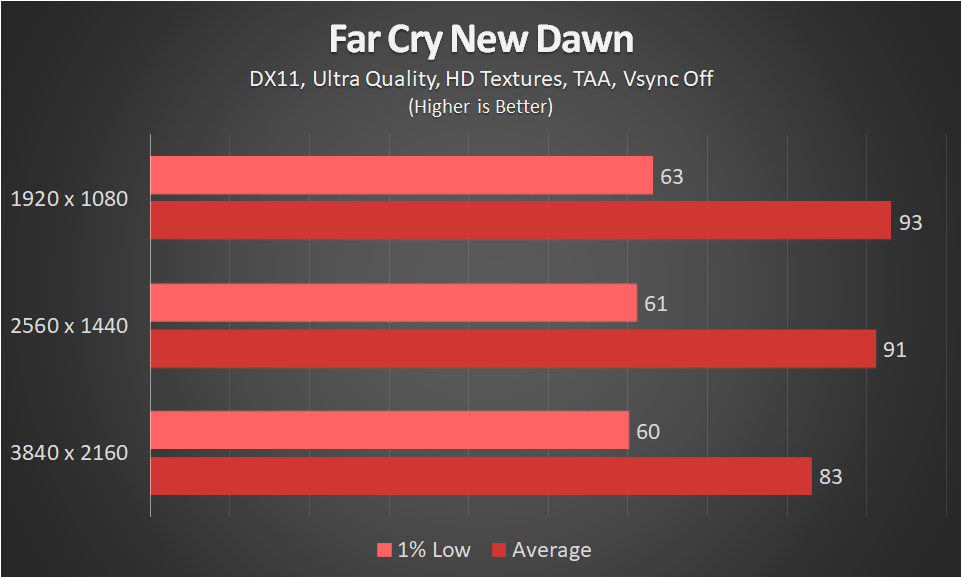
Far Cry New Dawn uses the Dunia 2 engine to beautifully render its open world map. Long draw distances, environmental effects, detailed foliage, and hectic action scenes make it a good candidate in testing GPUs.

Red Dead Redemption 2 uses Rockstar’s RAGE Engine that allows it to render vast expanses such as wilderness and cityscapes, simulate weather and lighting conditions, while still allowing granular detail of objects. It can also run using either Vulkan or DirectX 12 APIs.

The Division 2 utilizes the Snowdrop engine which allows it to render New York City with a great amount of detail and visual effects. Eye candy in the game include Global Illumination, Volumetric Lighting, realistic day and night cycle, and general high-resolution textures.
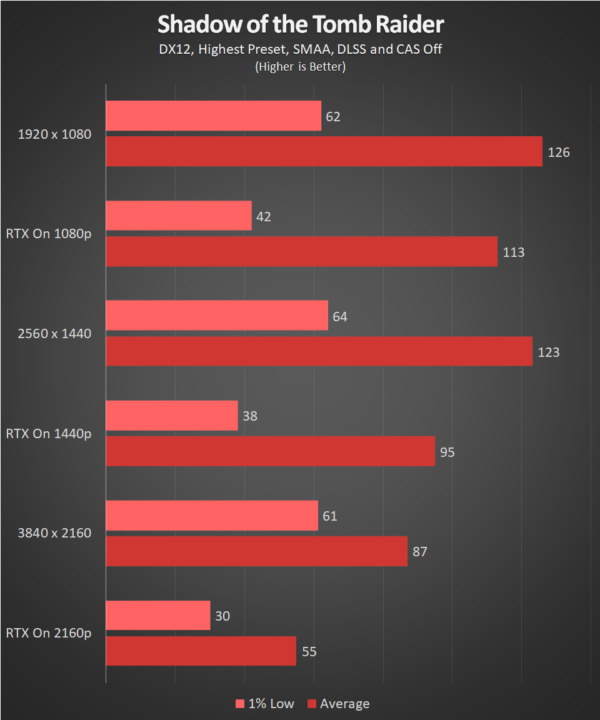
The latest entry in Lara Croft’s adventure, Shadow of the Tomb Raider focuses in improving graphical realism such as how objects interact with light, detailed textures, and improved screen-space reflections on surfaces thanks to its Foundation Engine.

Metro Exodus moves on from the closed areas its prequels and embarks on a semi-open world journey. A larger world means more details while still preserving the level of detail on vegetation and tessellation on textures. The game also comes with heavy particle and lighting effects as well as support for ray tracing.
1080p – The TUF Gaming RTX 3080 is basically an excessive card at this resolution. Even at the highest settings, the GPU is able to keep high framerates without breaking a sweat. Basically, the only limiting factor here is the CPU.
1440p – As we have mentioned before, the RTX 3080 makes 1440p look like 1080p compared to previous generation GPUs in terms of the number of frames being rendered. This is the resolution where the card is able to pump out higher framerates even at the maximum settings while still delivering better details.
2160p – We believe that the RTX 3080 has been made for this resolution. Even at 3840 x 2160, the card is able to deliver consistent framerates without being forced to throttle down the settings. Triple A games with their highest settings turned up can now be enjoyed without a hitch while we are sure that it will be able to take advantage of higher refresh rates at UHD for esports titles if you have a monitor that supports it.
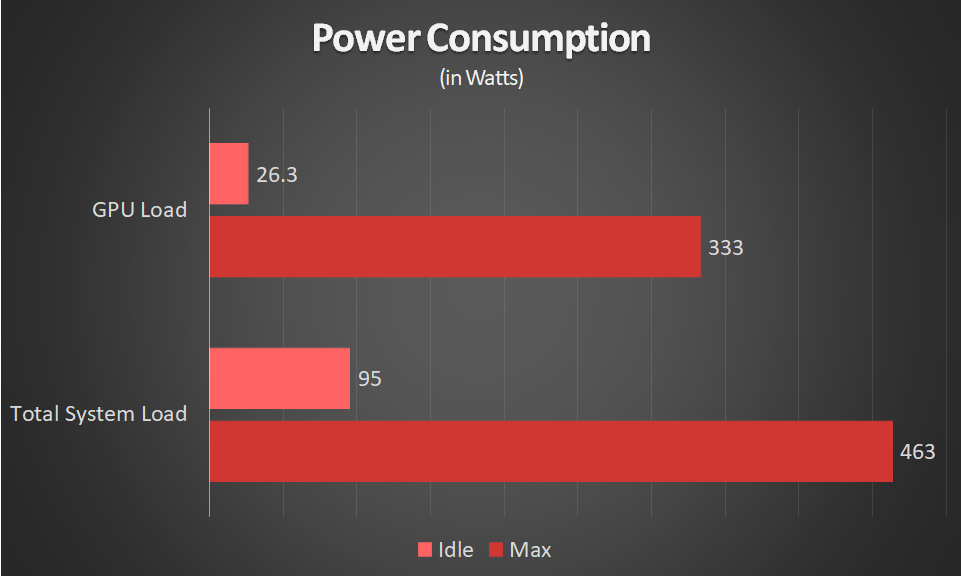
The ASUS TUF Gaming RTX 3080 10G is able to take in a maximum of around 333W under complete load with an average clock speed of 1890MHz during stress tests. At idle, however, it only requires a minimum of around 26W.
The whole system load puts our whole test bench at around 463W measured via the socket. This means that if you have a midrange system like ours, a 650W PSU should be enough to power your whole PC. A more power-hungry processor like an AMD Ryzen 9 3950X or an Intel Core i9-10900K, however, would need a higher capacity PSU.
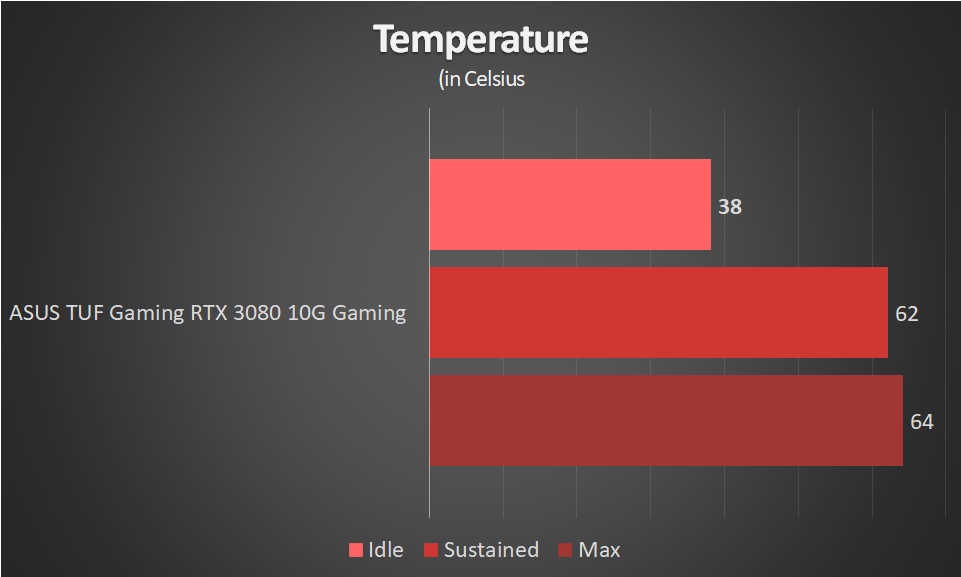
The card is one cool customer even under heavy load. At idle the fans does not spin at all unless they reach around 50 – 60°C. Even under max load, the average temperature only reaches 62°C with the maximum being reached only 63°C. Fans are surprisingly quiet even under stress. A slight coil whine can be heard alongside the whirring of the fans, but the noise produced will be substantially be lessened once it is put in a closed case.
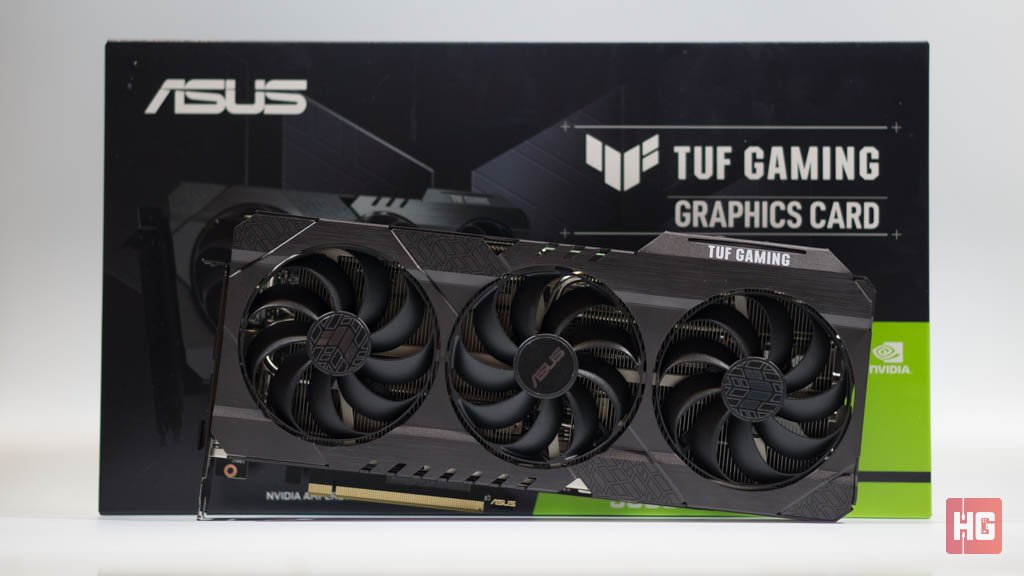
While technically being a budget rendition of the NVIDIA GeForce RTX 3080 compared to its competitors, the ASUS TUF Gaming RTX 3080 10G is anything budget cheap. While it is positioned in a lower bracket in the market, it still offers all the premium features and top performance that more expensive cards offer.

At PhP 41,000, the ASUS TUF Gaming RTX 3080 10G offers one of the best gaming experiences available at its price point. With its top notch performance and cooling solution as well as its solid design, it’s definitely a solid buy if you can catch it while it’s on stock. With one of the best price-to-performance yet, we are happily giving the ASUS TUF Gaming RTX 3080 10G our seal of approval.
